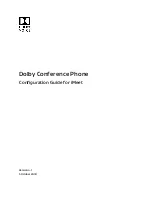
Safety
87
Saf
e
ty
rated. Your hearing device
manufacturer or hearing health
professional may help you
find this rating. Higher ratings
mean that the hearing device is
relatively immune to interference
noise. The hearing aid and
wireless phone rating values
are then added together. A sum
of 5 is considered acceptable
for normal use. A sum of 6 is
considered for best use.
In the above example, if a
hearing aid meets the M2 level
rating and the wireless phone
meets the M3 level rating, the
sum of the two values equal M5.
This is synonymous for T ratings.
This should provide the hearing
aid user with “normal usage”
while using their hearing aid with
the particular wireless phone.
“Normal usage” in this context is
defined as a signal quality that is
acceptable for normal operation.
The M mark is intended to
be synonymous with the U
mark. The T mark is intended
to be synonymous with the UT
mark. The M and T marks are
recommended by the Alliance for
Telecommunications Industries
Solutions (ATIS). The U and UT
marks are referenced in Section
20.19 of the FCC Rules. The
HAC rating and measurement
procedure are described in the
American National Standards
Institute (ANSI) C63.19 standard.
To enter that the Hearing Aid
Compatibility rating for your
phone is maintained, secondary
transmitters such as Bluetooth
components must be disabled
during a call. See Page 78 for
instructions to disable these
components.










































